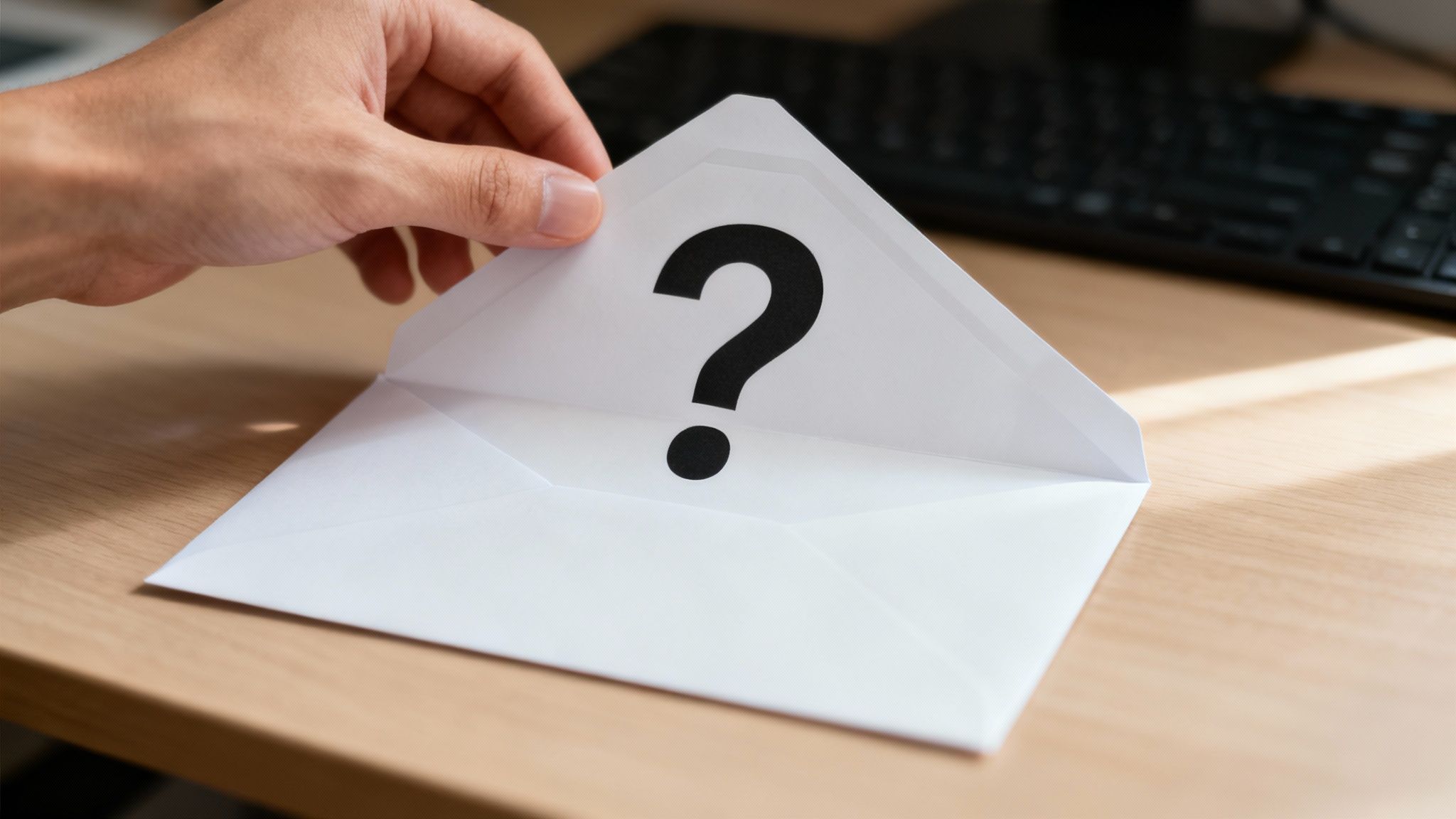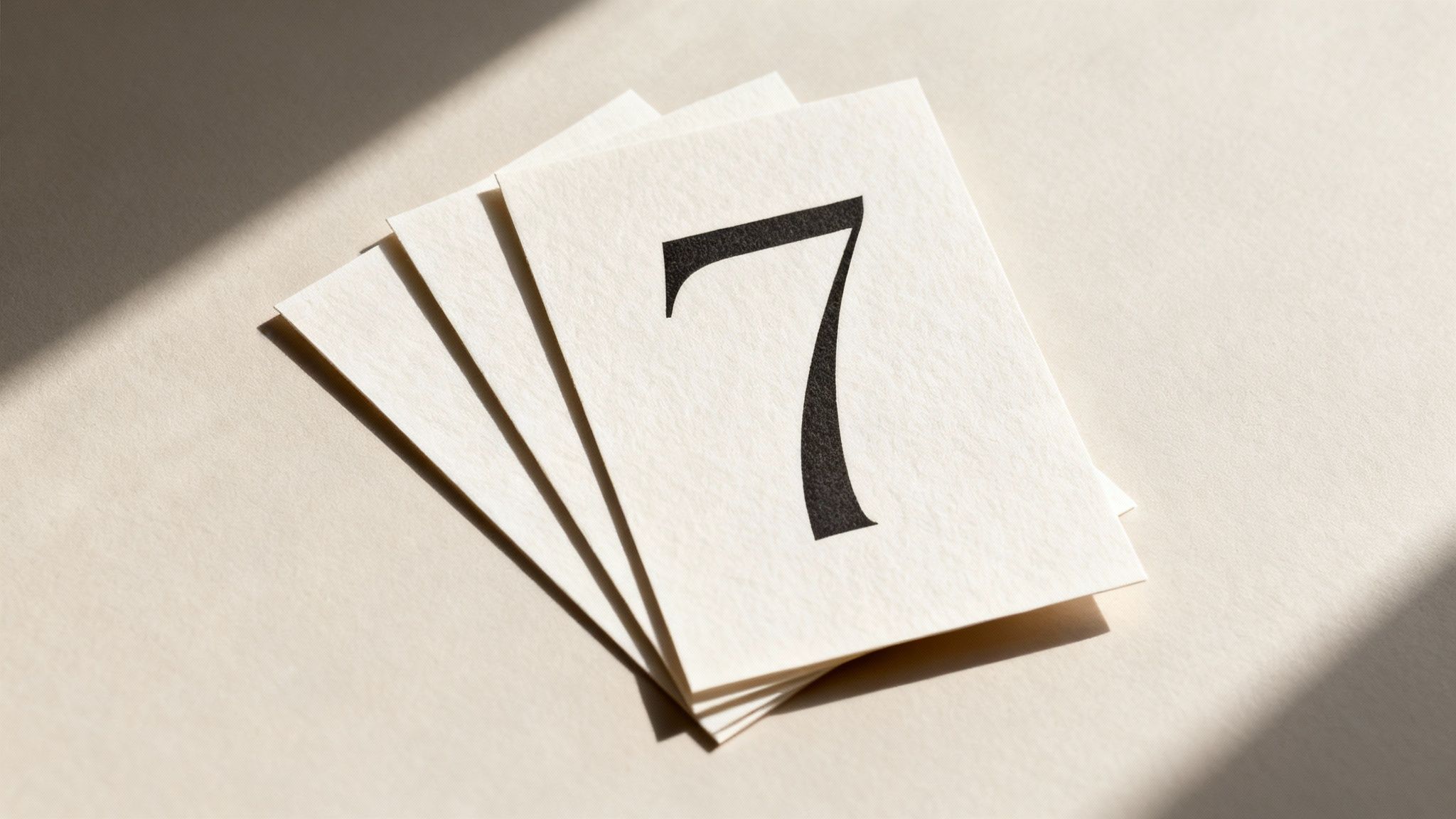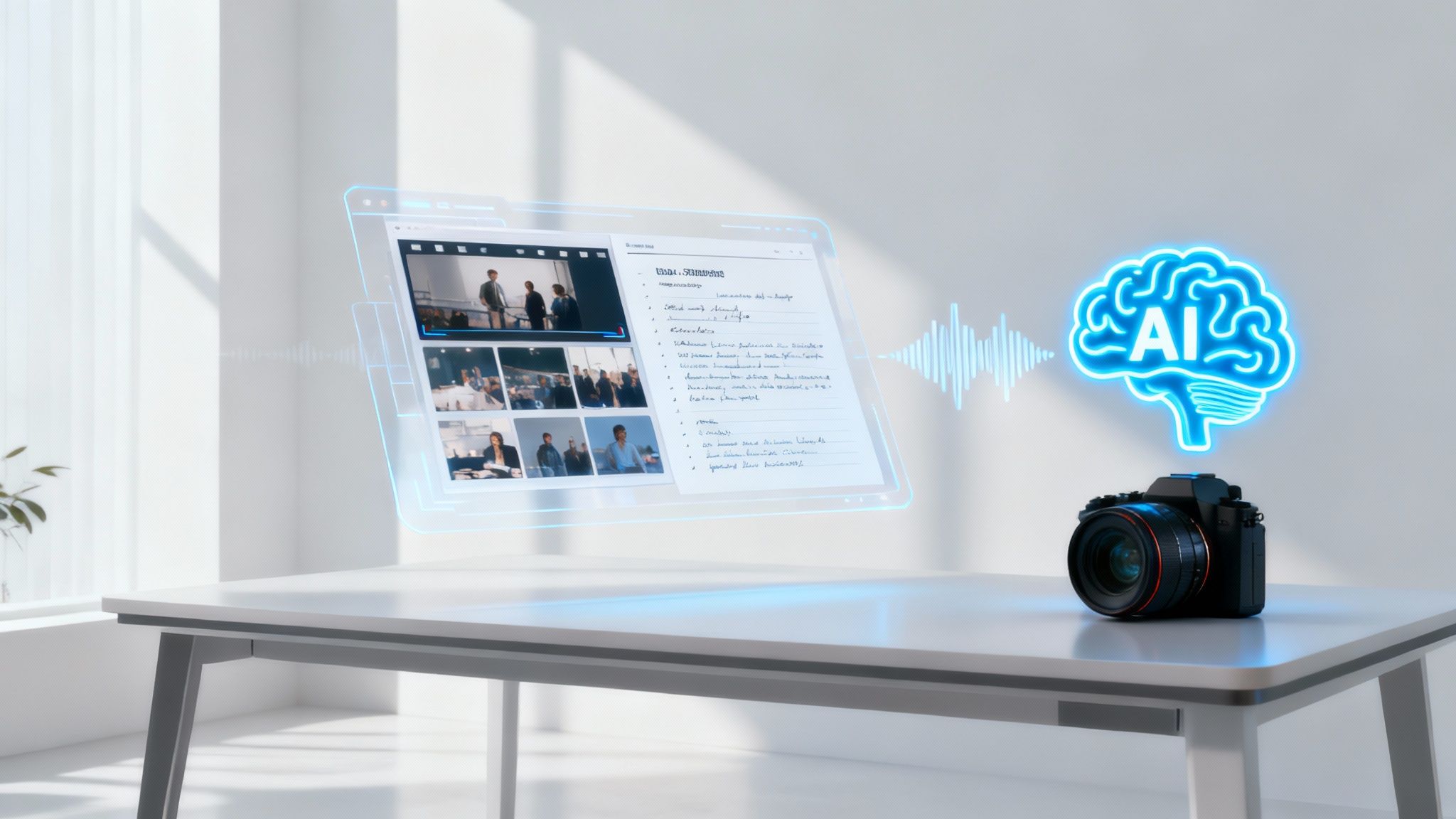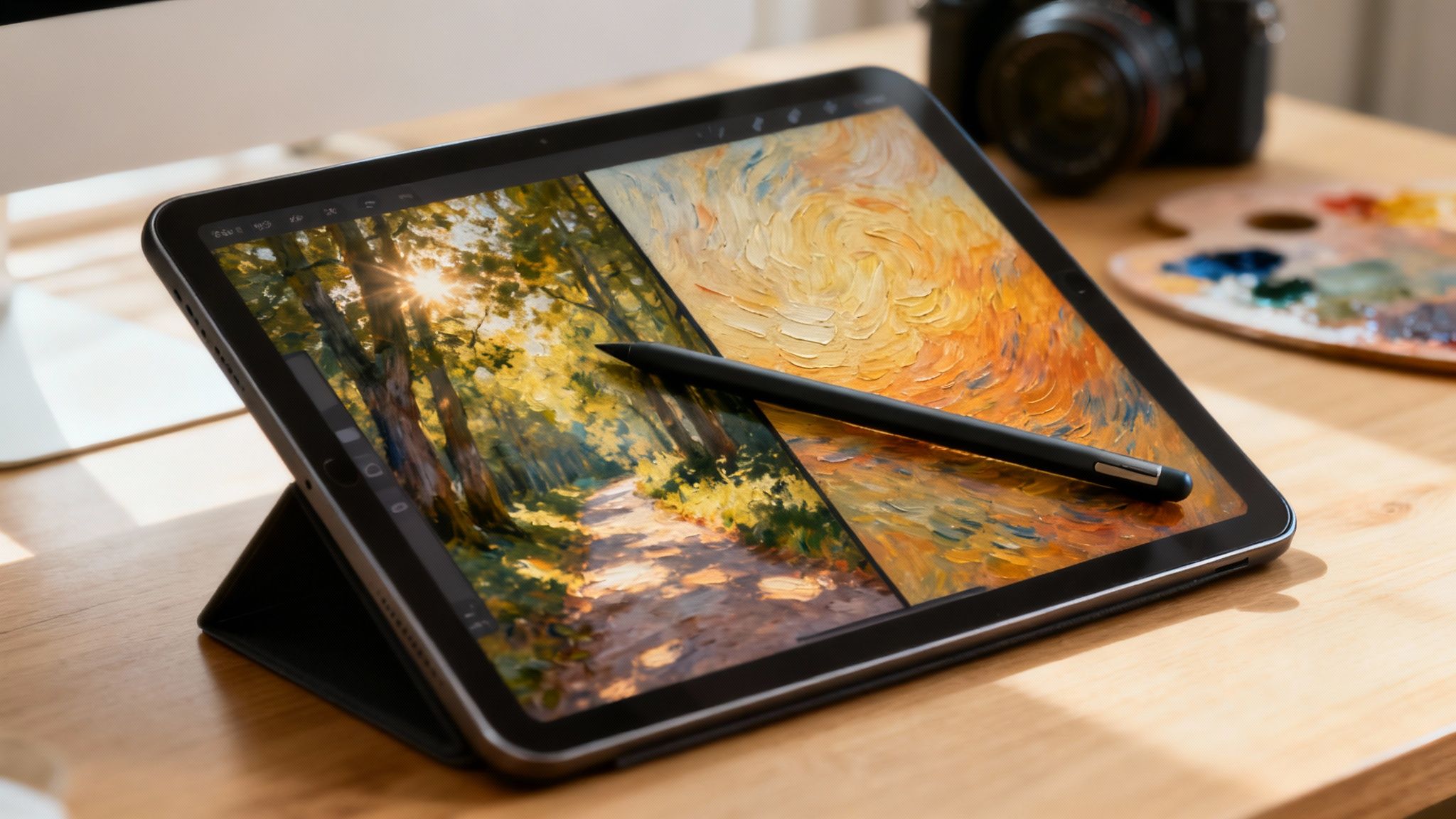
You've spent hours crafting the perfect newsletter—polishing the copy, curating links, and perfecting the layout. But all that effort is wasted if no one opens it. This is a common frustration for marketers and creators: a brilliant message dying in a crowded inbox. The difference between a dismal open rate and a stellar one often comes down to just a few carefully chosen words in the subject line. These words are your first and only chance to capture attention.
This article is your guide to mastering those words. We’ll move beyond generic advice to dissect 10 powerful types of newsletter headline examples, from the Curiosity Gap to the Number-Driven format. We will break down the psychological triggers they use, show you real-world examples, and give you actionable frameworks to write headlines that demand to be clicked, turning unopened emails into engaged, loyal readers.
1. The Question Headline
The question headline is a classic engagement tactic that frames your subject line as a direct query to the reader. This approach works by sparking curiosity and activating a problem-solving mindset. Instead of simply presenting information, you invite your audience into a conversation, making them an active participant from the moment they see your email.

This format is one of the most effective newsletter headline examples because it immediately connects the content to a potential reader's pain point or goal. By posing a question you know your audience is already asking themselves, you create an instant sense of relevance and urgency. For creators and marketers, a question like "Is your content workflow broken?" directly addresses a common challenge and promises a solution inside.
Strategic Breakdown
Question headlines tap into a powerful psychological trigger called the "information gap theory." When we encounter a question that we don't know the answer to, our brain feels a sense of incompleteness, compelling us to seek out the missing information. Brands like ConvertKit and Substack use this strategy frequently to draw in creators who are looking for answers to grow their businesses. A well-crafted question implies that the answer lies within your newsletter, transforming your email into a valuable resource.
Actionable Takeaways
- Focus on 'What' and 'How': Avoid simple yes/no questions. Questions starting with "What," "Why," or "How" encourage deeper thought and promise a more substantial answer.
- Address a Specific Pain Point: Your question should reflect a genuine challenge your audience faces. For instance, "Ready to Double Your Subscribers?" speaks directly to a common creator goal.
- Deliver on the Promise: The most critical rule is to ensure your newsletter content thoroughly answers the question posed in the headline. Failing to do so can damage reader trust.
- Learn from the Pros: Mastering this technique is a core skill. For a deeper dive into crafting compelling queries, explore these foundational copywriting tips for beginners.
2. The Number-Driven Headline
The number-driven headline uses specific figures, statistics, or lists to create a promise of clear, quantifiable value. This approach works by tapping into our brain's preference for concrete data over vague statements. Numbers add specificity and credibility, telling the reader exactly what to expect and how much information they will receive, which makes the content feel more organized and easy to digest.

Popularized by platforms like BuzzFeed, this format is one of the most reliable newsletter headline examples for boosting open rates. For a marketing agency, a headline like "5 Proven Ways to Boost Client Engagement" sets clear expectations and suggests a straightforward, actionable solution to a reader's problem, making the email feel like an efficient use of their time.
Strategic Breakdown
Number-driven headlines leverage psychological principles of certainty and structure. When a reader sees a number, it signals that the content is well-organized, finite, and easily scannable. This reduces cognitive load and makes the value proposition instantly clear. The specificity of a number also builds trust; "7 Strategies" feels more authoritative and researched than just "Strategies." This tactic creates a predictable path for the reader, assuring them that the newsletter contains a tidy package of valuable insights waiting to be unpacked.
Actionable Takeaways
- Prioritize Odd Numbers: Studies suggest headlines with odd numbers (like 3, 5, or 7) often perform better, as they feel less manufactured and more authentic to the human brain.
- Place the Number First: Start your headline with the number for maximum impact (e.g., "5 Ways to..." instead of "How to... in 5 Ways"). This immediately grabs attention.
- Keep It Achievable: Use a number that feels substantial but not overwhelming. "3 Critical Tips" is more appealing than "27 Critical Tips," which can seem like too much work.
- Deliver on Your Promise: If your headline promises seven tips, ensure your newsletter clearly presents all seven. Failing to meet this expectation is a quick way to lose reader credibility.
3. The Curiosity Gap Headline
The curiosity gap headline is a powerful technique that reveals just enough information to intrigue readers but withholds a key detail, compelling them to open the email to satisfy their curiosity. This approach leverages what psychologists call the "information gap theory"—the mental discomfort we feel when there's a void between what we know and what we want to know. It creates a powerful itch that can only be scratched by clicking "open."

This format is one of the most compelling newsletter headline examples because it transforms your email from a simple update into an unsolved mystery. By teasing a valuable piece of information, such as "The One AI Tactic Top Marketers Are Using," you frame your newsletter as the exclusive source of the answer, making it feel indispensable to your audience.
Strategic Breakdown
Curiosity gap headlines create an urgent need for closure. When a headline hints at a secret, a surprising outcome, or a little-known fact, the reader's brain is naturally driven to find the missing information. Viral content creators and growth hacking newsletters frequently use this to maximize open rates, knowing that the implied promise of a revelation is hard to ignore. The key is to create a gap that feels both intriguing and relevant to the reader’s interests, ensuring they feel rewarded, not tricked.
Actionable Takeaways
- Tease, Don't Deceive: Hint at the valuable information within, but never over-promise or use clickbait. The payoff inside the email must exceed the expectation set by the headline.
- Be Specific but Incomplete: Use phrases like "The one thing..." or "This single hack..." to signal a focused, high-impact insight. For example, "Brands Are Using This Strategy (and You Should Too)" is more effective than a generic alternative.
- Use Sparingly: Overusing this technique can lead to reader fatigue and erode trust. Save it for your most surprising or valuable content to maintain its impact.
- Monitor Unsubscribe Rates: A spike in unsubscribes after sending a curiosity-driven email is a clear sign that your payoff didn't match the promise, or the style felt manipulative to your audience.
👉 Try MediaWorkbench.ai for free – schedule your posts and generate AI content in one place!
4. The How-To Headline
The how-to headline is a powerful, education-first approach that frames your email as a practical guide to solving a specific problem. This format immediately signals value by promising actionable steps, positioning your newsletter as an indispensable resource rather than just another piece of content. It appeals directly to the reader's desire for self-improvement and tangible results.
This strategy is one of the most consistently high-performing newsletter headline examples because it aligns perfectly with user intent. For solopreneurs and freelancers, a headline like "How to Repurpose One Blog Post into 10 Social Media Updates" directly addresses their need for productivity and efficiency. By offering a clear roadmap to a desired outcome, you tap into that core motivation and build immediate trust.
Strategic Breakdown
How-to headlines work because they make a direct promise of utility and knowledge transfer. When a reader sees a headline like "How to Grow Your Email List Without Paid Ads," it creates a clear expectation of the value they will receive. This format leverages the brain's preference for structured, step-by-step information, making the content feel less intimidating and more achievable. Industry giants like HubSpot and Backlinko built their empires on this content model, proving its effectiveness in attracting and retaining a loyal audience seeking expertise.
Actionable Takeaways
- Be Specific About the Outcome: Don't just explain the process; highlight the result. "How to Write Subject Lines That Get 50% Open Rates" is much stronger than "How to Write Subject Lines."
- Promise a Realistic Gain: Ensure the promised outcome is believable and achievable for your target audience. Over-the-top claims can undermine credibility.
- Use Simple, Direct Language: Avoid jargon. The goal is clarity and immediate comprehension. Your headline should be easily understood at a glance.
- Try Proven Variations: Mix in alternatives like "The Complete Guide to..." or "A Step-by-Step Guide to..." to keep your headlines fresh while retaining the core educational promise.
5. The Urgency/FOMO Headline
The Urgency/FOMO headline leverages the psychological principles of scarcity and time-sensitivity to compel an immediate response. By creating the impression that a valuable opportunity is about to disappear, this approach taps into the viewer's "Fear Of Missing Out" (FOMO), a powerful motivator that drives quick action.
This format is one of the most powerful newsletter headline examples for driving conversions, particularly for sales, event registrations, or limited-time offers. Headlines like "Only 24 Hours Left: Get 50% Off" or "This Strategy Works Until Friday" create a clear deadline, shifting the reader from passive consideration to active decision-making.
Strategic Breakdown
Urgency works by shortcutting the reader's analytical process. When faced with a time constraint, people are more likely to act on impulse to avoid potential loss. This is a core tactic in e-commerce and online course marketing, where flash sales and limited spots create a perception of high demand and fleeting value. The key is authenticity; the scarcity must be real for the tactic to work long-term without eroding trust. A well-executed FOMO headline makes opening the email feel like a non-negotiable, time-sensitive task.
Actionable Takeaways
- Be Specific and Genuine: Vague urgency is ineffective. Use clear deadlines like "Ends Tonight at Midnight" or "Last 3 Spots Available." Only create urgency when it is real.
- Balance with Value: The urgency should be tied to a clear benefit. "50% Off Ends Soon" is more compelling than just "Ends Soon" because it reinforces what the reader stands to lose.
- Don't Overuse It: Using urgent headlines too frequently can lead to "urgency fatigue," where your audience starts ignoring them. Reserve them for your most important, time-bound campaigns.
- Honor Your Deadlines: If you say an offer ends on Friday, it must end on Friday. Breaking this rule destroys credibility faster than almost any other mistake, rendering future urgency appeals useless.
We’ve covered five powerful headline types, but there are more proven formulas to master. From leveraging authority to creating personal connections, the second half of our list will give you the advanced tools you need to maximize every send.
We've deconstructed the architecture of high-performing newsletter headlines, from the directness of a How-To to the psychological pull of a Curiosity Gap. You now have a toolkit filled with proven formulas designed to stop the scroll and earn that coveted click. The key takeaway is not to find a single "magic bullet" headline but to match the right formula to your campaign’s goal and your audience's mindset. A data-rich report might call for a Number-Driven headline, while a personal founder's journey is perfect for a Story-Based approach.
Ready to move from theory to high-speed execution? MediaWorkbench.ai can help you generate dozens of headline variations based on these proven formulas in seconds. Stop staring at a blank subject line and start testing what truly resonates with your audience. Try MediaWorkbench.ai for free and discover how AI can revolutionize your content creation workflow.

